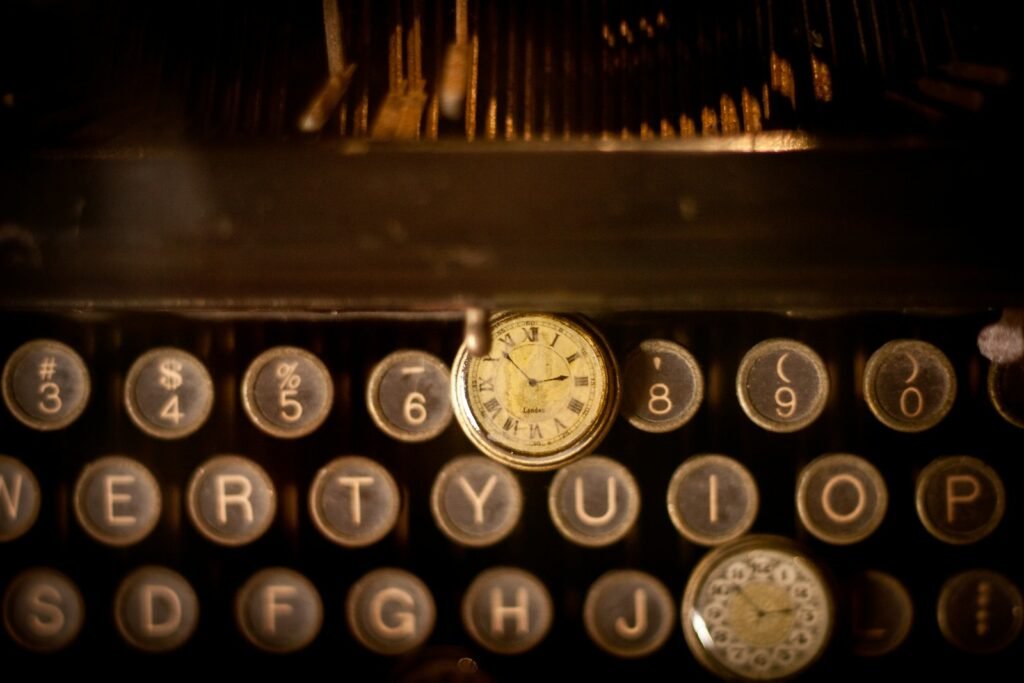
Common Mistakes to Watch Out For
Ah, the perplexing and unpredictable world of editing! In my role as a masterful essay coach, I have witnessed a whirlwind of emotions from the sheer horror of glaring typos to the mind-bending confusion of grammar mistakes. Let us now embark on a journey through the chaotic realm of common writing errors and discover how to navigate through them with finesse.
To begin with, let us delve into the maddening maze of homophones. It’s not just about navigating through the labyrinthine paths of their, there, and they’re although these mischievous words love to toy with our minds. As the wise Mark Twain once proclaimed, “The distinction between the nearly correct word and the right word is truly monumental.” So do not allow those cunning homophones to trip you up like a mischievous prankster with a whoopee cushion. Stay alert, stay sharp, and always remember spell check is your ally in this tumultuous editing journey.
Tips for a Successful Editing Process
The task of editing may seem like a daunting mountain to climb, but fret not, dear writer! To embark on this journey towards refining your work, keep in mind that even Rome wasn’t magically constructed overnight take breaks, have a snack break or perhaps indulge in a celebratory dance. Editing is akin to sculpting a magnificent masterpiece; it demands time and a sharp eye to chip away at the superfluous elements. So, don your figurative editing hat and prepare yourself to buff that essay until it gleams brighter than a freshly polished car.
To start off, address the major aspects before delving into the intricate details. As the legendary wordsmith Ernest Hemingway once famously stated, “The initial draft of anything is rubbish.” Embrace the chaos of your rough draft and concentrate on refining your concepts and overall structure. Once you’ve established a strong foundation, then you can incorporate those sophisticated vocabulary words and scrutinize for any grammar blunders lurking about. Keep in mind that editing is an expedition rather than merely reaching a destination savor the process and be sure to give yourself credit for a job well executed!
The Importance of Proofreading
Oh, the mysterious art of proofreading! A task often disregarded and underestimated, yet so essential in the world of writing. It’s like navigating through a cluttered room to uncover that elusive missing sock – laborious, but immensely gratifying when it finally emerges!
When you delve into proofreading, you’re not merely seeking out typos and grammatical blunders; oh no, you’re embarking on a thrilling escapade, a quest for lucidity and harmony amidst disorder. As the illustrious wordsmith John Irving once professed, “half my existence is an act of revision.” So why not embrace the chaos and plunge headlong into the realm of proofreading? After all, as the age-old adage goes, “the devil lurks in the details,” and those cunning imps relish concealing themselves in the unassuming crevices of your prose. Therefore grab your magnifying glass (or spectacles if need be) and let us embark on this linguistic treasure hunt!
Bear in mind that proofreading transcends mere error correction; it involves refining your piece until it gleams like a freshly waxed automobile under sunlight. It entails ensuring that your thoughts flow seamlessly and your expressions pirouette gracefully across the parchment. So next time you are tempted to bypass the proofreading phase, view it as indulging your composition in a well-deserved spa retreat. And as sagacious Ernest Hemingway once remarked: “The initial draft of anything is [expletive],” hence let us roll up our sleeves and infuse those words with brilliance!
Utilizing Editing Tools and Software
Imagine this: you’re waist-deep in the labyrinth of editing your magnum opus, grappling with the elusive errors that materialize out of thin air. But fret not, esteemed wordsmith, for in this era of innovation, we are blessed with a myriad of editing tools and software to aid us on our journey. These invaluable instruments can expedite the editing process, ensuring that your prose gleams like a precious gem amidst the rubble.
With just a mere click, you can subject your writing to grammar checkers such as Grammarly or Hemingway Editor to ensnare those cunning grammatical and stylistic gremlins. And let us not overlook spell checkers like SpellCheckPlus or Ginger Software – after all, no one desires to be crowned the monarch of typos. Furthermore, behemoths like ProWritingAid proffer comprehensive evaluations of your work, pinpointing areas ripe for refinement in terms of readability, style, and overall impact. So why not embrace the marvels of technology and enlist these editing tools and software as loyal companions in pursuit of perfection?
How to Structure Your Editing Process
When it comes to structuring your editing process, envision it as piecing together a perplexing puzzle. Would you dare to commence with the corners or edges? Nay! Instead, tackle the simple pieces first and gradually navigate towards the more intricate sections. Commence by scrutinizing for grammar and spelling blunders. As the renowned wordsmith Ernest Hemingway once proclaimed, “The first draft of anything is [expletive].” He comprehended the significance of editing and revising in sculpting a masterpiece.
After rectifying the fundamentals, concentrate on the flow and coherence of your writing. Reciting aloud can aid in detecting awkward phrasing or inconsistencies. It’s akin to jazz maestro Miles Davis weaving an improvised solo – seamless transitions make all the disparity. Recall, as sage novelist Stephen King counsels, “Write with the door closed, rewrite with the door open.” Editing serves as your opportunity to refine your work and illuminate your ideas brilliantly.
Proofreading Techniques You Need to Know
When it comes to proofreading, the task is not merely about spotting typos and grammar blunders, although those are undoubtedly crucial. It’s more about ensuring that your writing is lucid, succinct, and powerful. A method that can aid in achieving this goal is reading your work aloud. Picture the iconic Ernest Hemingway reciting his words while discarding unnecessary verbiage like a boxer throwing punches.
Another strategy to consider is taking breaks between writing sessions and proofreading tasks. It’s easy to become engrossed in the writing process and overlook errors within your own work. As wisely stated by Benjamin Franklin, “Write without fear, edit without mercy.” Allow yourself some distance from your writing before delving into the proofreading phase. It’s akin to returning to a chaotic room with fresh eyes you will notice things you hadn’t seen previously, such as misplaced commas or clumsily constructed sentences.
Collaborating with Others for Feedback
Oh, the delightful chaos of collaboration! There’s a certain thrill in bouncing ideas off a trusted accomplice when seeking feedback on your work. It’s like having your own personal cheerleading squad rooting for you as you navigate the unpredictable world of editing and proofreading.
But how does one truly maximize the benefits of collaborating with others for feedback? The answer is simple – choose your comrades wisely. Surround yourself with the dreamers and drs, the believers and thinkers, but above all, surround yourself with those who can see the greatness within you even when you may not see it yourself. This concept holds true in the realm of writing as well. Seek out individuals who can provide constructive criticism laced with kindness. Remember, as Maya Angelou wisely stated, “We need joy like we need air. We need love like we need water. We need each other like we need the earth we share.” So, discover your writing tribe and let the enchantment of collaboration take its course!
Strategies for Catching Errors
Oh, the eternal struggle of uncovering those elusive errors in our writing! It’s like a never-ending game of hide-and-seek with misplaced commas and sneaky typos. But fret not, dear writers, for I am here to equip you with some handy strategies to capture those cunning mistakes.
First and foremost, take a moment to pause and give your eyes a much-needed rest. Gazing at the same words endlessly can transform even the sharpest of us into sightless moles. Winston Churchill once remarked, “To progress is to alter, so let’s mix things up a tad.” Modify the font, the color, or even the layout of your text to deceive your brain into perceiving things anew. Who would have thought Churchill had an appreciation for fonts?
Then comes the unconventional step of reading your writing aloud. Yes, it may seem peculiar but trust me on this one. Your ears might just apprehend what your eyes have overlooked. As Mark Twain wittily stated, “The distinction between nearly right word and right word is indeed substantial.” Thus, allow those words to flow from your tongue into your mind in order to reveal those almost-right terms that require a slight push towards becoming correct ones.n
The Difference Between Editing and Proofreading
In the realm of writing, editing and proofreading form a formidable duo with their own unique powers. Editing emerges as the heroic figure, swooping in to rescue your work from chaos and confusion. It refines and polishes your words, giving them a sleek new sheen like a fresh coat of paint. On the other hand, proofreading plays the role of vigilant sidekick, keeping watch for sneaky errors that try to infiltrate your writing.
Editing is where creativity flourishes, where you can rearrange words and sentences like a jigsaw puzzle to craft the perfect masterpiece. It’s an opportunity to unleash your inner wordsmith and transform your writing into a true work of art. Meanwhile, proofreading takes on the guise of a detective hunting for clues in every corner of your text. Its focus on detail ensures that no error goes unnoticed, guaranteeing that your writing shines brilliantly when released into the world.


